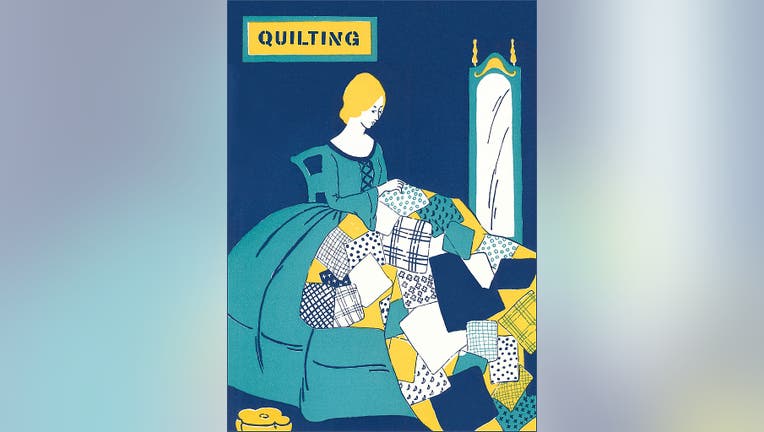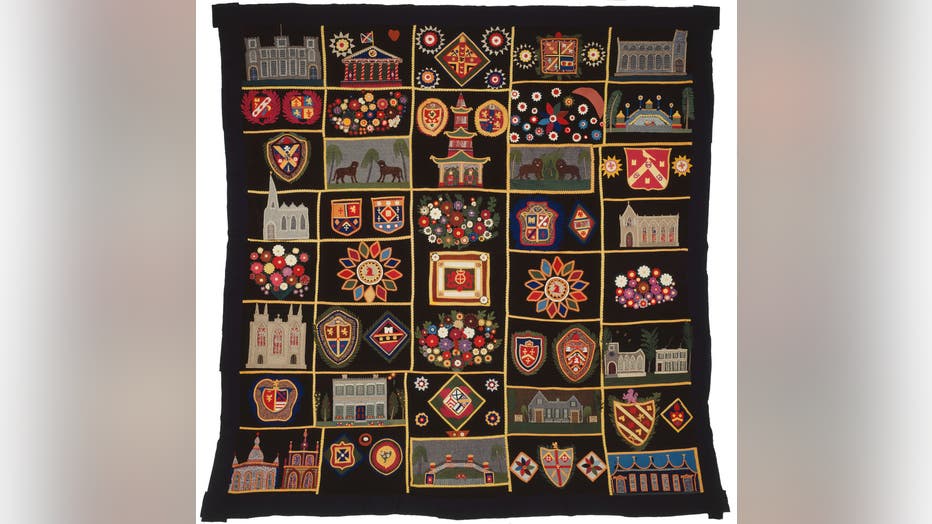San Jose quilt museum needs community's help to survive

Vintage illustration of Quilting Poster, 1900s. (Photo by Found Image Holdings/Corbis via Getty Images)
SAN JOSE, Calif. - A decades-old staple in San Jose's art scene is at risk of closing, so it's turning to the community for help.
The San Jose Museum of Quilts and Textiles, located in downtown's SoFA district, has raised enough money to survive until July. After that it's up to donors, visitors and fans to help raise a total of $300,000 -- and the museum is already halfway there.
The 42-year-old museum is a small, beloved part of San Jose's burgeoning art scene. On weekends it showcases the intricate, colorful and unique work of quilters and fabric artists -- particularly from the Bay Area. Throughout the week it offers art classes and programs such as social crafting and a macrame workshop.
The museum comes alive on First Fridays, a monthly downtown event that showcases the neighborhood's art, music and food scene. The South First Street location is a haven for visitors to test their creative prowess at various art forms such as stamping or weaving.
Deborah Corsini, fabric artist and former curator for the museum, said it's a sanctuary for fabric and fiber artists across the country.
The museum is the first textiles museum to open in the United States, Corsini said.
"There are not that many museums dedicated to fiber arts and fiber arts is such an important ingredient in the history of man," Corsini told San Jose Spotlight. "From the moment we're born, we're wrapped in cloth and when we die, we're wrapped in cloth again."
She said fiber art is one that weaves together history, art, culture and connection. Losing such an institution would be a loss of connectivity and cultural understanding -- and it would be felt for years to come.
Museum Director Kris Jensen said it's not only the art, but the community interaction that makes this small museum so special. He said the long-term vision is offering various art classes and events for free, while showcasing the work of local artists. But for now, it's just about keeping the doors open.
"We are really trying to engage with the community, so it's not just the place where people come and look at amazing artwork on the wall, but a place where people can really come and engage and learn about textile art," Jensen told San Jose Spotlight. "This is a little gem here in San Jose that a lot of people just haven't heard of, even people who have lived here their whole lives. So we're really just trying to get the word out there."

Quilt with Buildings, Animals, and Coats of Arms, New York, c. 1890. Artist Unknown. (Photo by Heritage Art/Heritage Images via Getty Images)
The San Jose space is not the only small museum struggling to make ends meet after the pandemic. Jensen said it's a nationwide struggle.
"It's like a whole stream of things -- there's the lower attendance of the museum, funders changing their priorities," Jensen said. "People are focusing on basic needs like housing, and things that are so incredibly important. But it's usually arts organizations that usually kind of bear the brunt of that."
Jensen said some donors, who have been with the museum for years, have had to scale back their commitments -- especially after the pandemic due to other competing needs. It's also affected the way municipalities support the art scene.
San Jose's Department of Cultural Affairs went from allocating more than $5.5 million in grants in 2019, to about $3.5 million the following year. Since then, it has hovered around $4 million in grants. Director Kerry Adams Hapner said this year San Jose hopes to maintain the amount of funding for art grants, despite the city's $52 million budget shortfall.
Hapner said the city gave the museum a nearly $72,000 grant this fiscal year and hopes to maintain that amount. The city has shelled out $1.4 million since 2007 to support the museum.
"The San Jose Quilt and Textiles Museum is a really strong anchor to our SoFA district and it has continuously provided very high quality programs and exhibitions," Hapner told San Jose Spotlight. "Whether you're a professional artist, or you are just somebody that wants to get out and create, there's something for everybody at that institution... so this is a civic investment."

